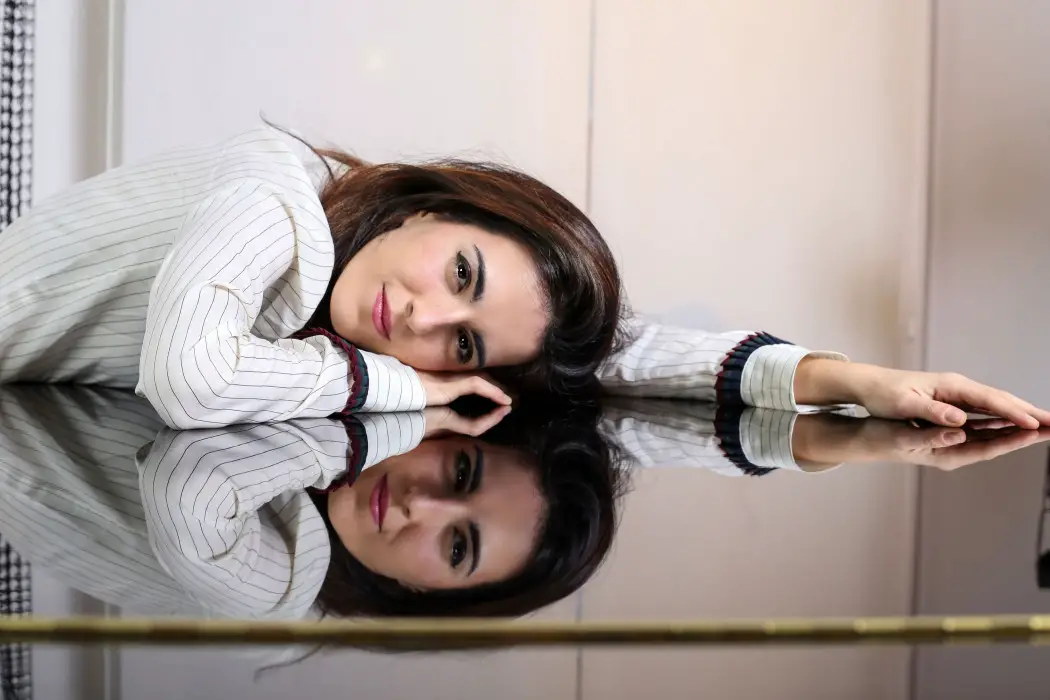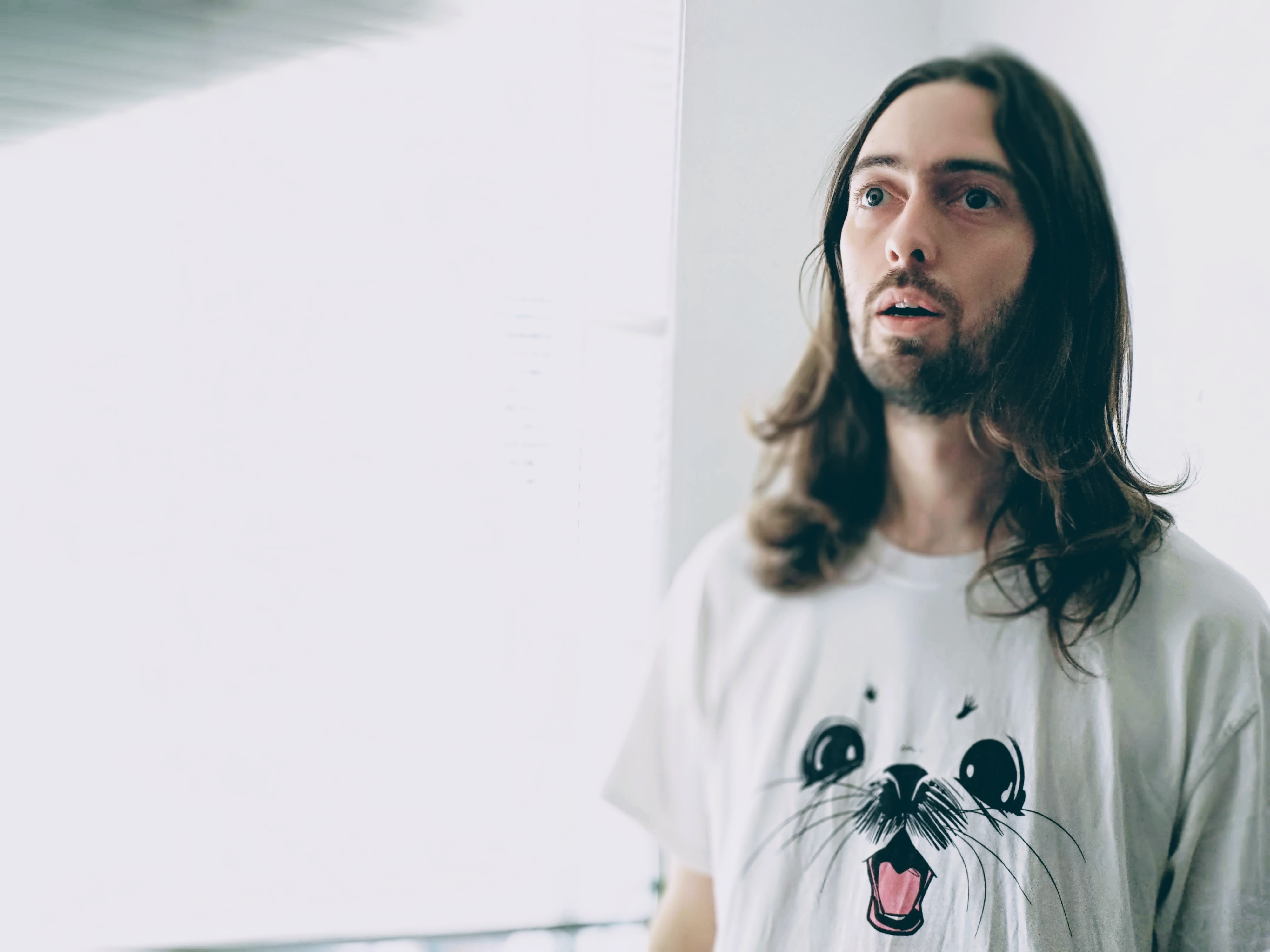Don’t judge a piece of music by its genre. It’s as simple as that. Atwood Magazine’s ‘Variations’ column discovers and discusses pieces, composers, conductors, old and new, all of which have contributed to the growth and expansion of the Classical genre. Turning grey from misrepresentation and preconceived notions, engaging with Classical music can dissolve the elitist, rule-bound confines of its historical origin and remind the mainstream of its relevance and significance.
With an already long career in the classical space, Turkish pianist and composer AyseDeniz Gokcin continues to claim her uniqueness through her virtuosic compositions and rebellious persona.
Stream: “Cycle” – AyseDeniz Gokcin
Turkish pianist and composer AyseDeniz Gokcin (pronounced Eye-Shae Den-ees) fell in love with the piano before she could speak. A child prodigy who began classical training at the age of five-and-a-half, her now twenty-year-long career began at just six years old when she won a classical competition.

“As a kid who listened to music composed 200 years ago, I had trouble connecting with people my age, so I embraced rock, rap, hip hop and pop music to fill that hole,” she recalls. “I pretty much grew up head banging to Nirvana and Rachmaninoff, falling in love with Red Hot Chilli Peppers and Chopin, and rioting against my parents with Prokofiev and Eminem.”
Gokcin’s adolescent years combined growing pains and globe-trotting ⏤ touring around the world performing Bach, Mozart and Beethoven while simultaneously craving connection with kids her own age. Needing to find a way to communicate and differentiate herself from the conservative nature of the Classical genre, she found her rebellion in turning Classic Rock into Classical music. As a young adult in 2013, Gokcin released Classical Concepts Tribute to Pink Floyd in which she reworked Pink Floyd’s music into the style of 19th Century Hungarian composer, Franz Liszt. The genre-bending project brought her world-renowned recognition and attracted a more diverse fan base that continues to support all her explorative endeavors today.
It was brand new to me and I was very insecure but very dedicated and academic about it. I wanted to create something new – not just “covers” that you see online, which have no creativity.
Gokcin’s new album of original compositions, MOTUS, melds classical conventions with her unique rebellious edge.
The album’s 12 tracks stand out among the simplistic, experimental, contemporary classical piano albums being made today. Out now on Apple Music and set for MOTUS takes you through the smaller moments in Gokcin’s life aiming to evoke emotion without electronic production or embellishments⏤ just AyseDeniz Gokcin and her keys. While her edgy, textured style and subversive performance behaviors (for the Classical world, at least) are differentiators she’s proud to own, her nonconformist artistic expression shines through in subtler ways on MOTUS maintaining a traditionally Classical sound.
I transitioned from “I can’t wear sneakers on stage, they are disrespectful” to “I am dancing when I play, no one can stop me” in 20 years.
Atwood Magazine spoke with AyseDeniz Gokcin about her new album, her plans for artistic evolution in the future, and the hurdles she faces as a woman navigating a career in the conventional classical world. Listen to MOTUS, out everywhere January 3, 2020!

A CONVERSATION WITH AYSEDENIZ GOKCIN
Atwood Magazine: What led you to choose piano as your primary instrument at such a young age? Can you talk a little bit about why you love the piano?
AyseDeniz Gokcin: We had an upright Kawai piano at home, and I spent a LOT of time as a baby playing with it as if it was my toy. I pretended to be a singer/songwriter and gave fake recitals to my parents. I think the piano is the easiest instrument for kids to learn as you can play a nice tune on it fairly easily whereas mastering a violin would be harder physically for anyone who is a beginner. So once you know the instrument, you can progress is super fast – and the repertoire of piano literature is immense. It is the most popular instrument and almost all famous composers played the piano professionally and wrote for it. The fact that you can have the entire range of bass, tenor, alto, and soprano in one go, is amazing! Also you can play chords and be a kind of a DJ – balancing the EQ between those registers naturally with your fingers, setting the tempo and creating an entire performance without the need for any other instruments. Piano is the leading instrument of all and I love it. And now that I have Kawai Pianos as a sponsor, I have resolved the problem of having to figure out logistics each time I move… As I move a LOT!
You discuss why you were moved to “Lisztify” Pink Floyd’s album in an interview with Classical FM’s John Brunning. What is the process like when composing something that so uniquely combines two styles of music? What were your greatest challenges when composing this project?
AyseDeniz Gokcin: It was brand new to me and I was very insecure but very dedicated and academic about it. I wanted to create something new – not just “covers” that you see online which have no creativity. I think songs sound really weird on the piano as most melodies are made of a few notes – so creating something that sounds like it was composed for the piano was my aim. I took the example of Franz Liszt – as he did the same thing 200 years ago. It was actually a very popular tradition in that time to take themes and create what we call “piano transcriptions.” I added a lot of his ‘show-off’ style bravura passages and made the Pink Floyd songs sound like how he would compose them if he were alive. I was inspired by his lifestyle too – that actually paralleled with Pink Floyd’s character from their movie “The Wall” – a romantic hero who isolates himself from the society with mental walls, is admired by the entire world for his music and charisma but has a lot of romantic failures. He cares about people, gives a lot of charity concerts and dives into a state of self exploration through art, music and philosophy. The words “alienation,” “consumerism,” “war,” and “faulty education system” are all reflected in my transcriptions. It’s that energy that I wanted to recreate.
What excites you most about the future of your career? Any directions, or new territories, you are looking forward to exploring?
AyseDeniz Gokcin: I am getting into composing more and I would like to score for films soon. My advantage is that I already have a fan base and they have been so supportive for everything I do – I am thankful to them and hope that my future projects will inspire and touch many hearts.
What does the amorphous genre of contemporary classical music look like from your perspective?
AyseDeniz Gokcin: I think classical music is currently like soundtracks. Because the one that is taught in music schools is more to me like ‘lab music’ – it is mathematically great but sounds like a cat walking on a piano at first. Although I respect it, I don’t like listening to contemporary classical music because it doesn’t connect people like traditional classical music did back in the day. I strongly believe that for me, personally, music is a platform to share emotions. It is not a calculation – and so far film composers like Hans Zimmer or John Williams do exactly that.

What does it mean to be a woman - especially a young woman - in the space of contemporary classical music? What kinds of hurdles have you faced navigating through your career?
AyseDeniz Gokcin: I faced a LOT of challenges – mostly because the classical music environment is so conservative. I felt guilty because of the societal pressures on me – whenever I did something new they would look at me as if I am straying away from classical into the ‘dark side.’ When I was 13, I gave a huge recital but I talked to the audience members about the pieces, added lyrics to Brahms and wanted to engage people more. People were surprised! They didn’t know what to make of it… I did the right thing and now a lot of people are on that path – however, being one of the first people to do that was a very hard burden to bear. You open yourself to discussion whenever you do something new, and you have to handle the consequences and criticisms.
Do you have any advice for young women looking to break into the world of music - or even just young female artists in general?
AyseDeniz Gokcin: I would say – explore your uniqueness and make it an asset. Find something only you do, because if you compete with others, there will never be an end. Only with creativity can you make yourself heard.
Find something only you do, because if you compete with others, there will never be an end. Only with creativity can you make yourself heard.

You’ve got a really cool style (from what I’ve seen in performance videos, interviews, photos, etc). Edgy, textured, elegant – your own. Does your style relate to your music in any way? Do you think style, clothing, your aesthetic presentation is an important aspect to your performance? If so, why?
AyseDeniz Gokcin: This is a great question and I have a good story about this.
When I was 11, I competed in a very big competition and after four rounds, I got into the final round. I was the only foreigner and most of the participants were very poor. They wanted to leave their country and winning a piano competition was their only way out. As it happens in many sectors, there was some pressure on the jury to making sure they gave them an opportunity, so when I was expecting to take place in the first three, I was given fourth place even though my performance was better than the other kids. The jury members invited my family and apologized and then I got into Juilliard right after (I didn’t end up going as I moved to Spain to study with Rosalyn Tureck instead).
I somehow linked being poor to being successful, and from then onwards I refused to look glamorous on stage. I wouldn’t wear any makeup, and rioted against the traditional classical dress-code which looked old and irrelevant to today. Only when I was 19, someone came to my green room and said, “Girl, you’re about to play for 800 people and you aren’t even wearing makeup? Let me put some blush on you!” So she did and that was the start of me trusting my own music and talent.
It probably sounds super weird but I had that superstition for such a long time. In a way I am happy I don’t see music through a branding perspective and I think what is inside you is more important and you should be loved for who you are not what you wear. At the same time, now I can really wear whatever I want because I have come to the level or artistic freedom and recognition that nobody’s comments will affect my security!
I’m looking forward to collaborating with designers in the future and spreading the energy of the music through them!
— — — —

Connect to Aysedeniz Gokcin on
Facebook, Twitter, Instagram
Discover new music on Atwood Magazine
? © 2019
:: Stream Aysedeniz Gokcin ::








